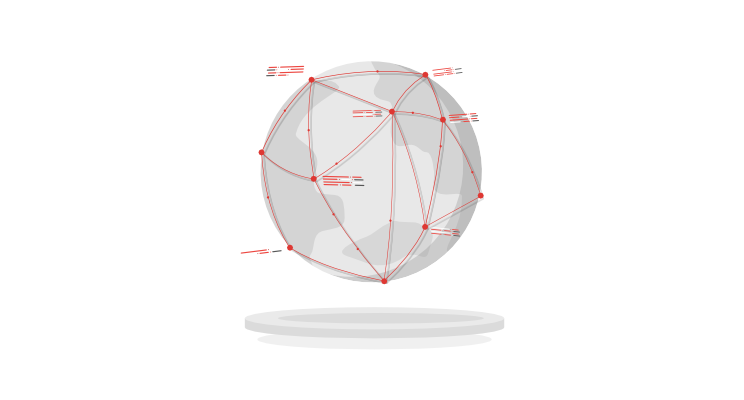
13 Elements That Contribute To Technical Debt

Nowadays, with technology advancing at a fast rate, technical debt occurs more frequently. Yet many companies may still be unaware of it.
And it’s not too much of a stretch to say that the majority of people working with technology on a daily basis have encountered, dealt with, and incurred such debt.
That is not a thing to ignore, either.
The cost of technical debt management in large companies can reach up to 25% of the whole development time, so it’s not a minor issue for these organizations.
When working with technology, you have to face the fact that its rapid development will affect the final project or its implementation time. Moreover, it is important to remember that technical debt is often inevitable, and many companies use it consciously.
Knowing the causes of technical debt can help prevent or simply get out of it.
Below, you’ll find a list of common reasons contributing to, causing, and growing technical debt. Before we dive deep into the details, let’s briefly go through what technical debt actually is.
What is technical debt?
According to Product Plan, technical debt is nothing more than the result of prioritizing speedy delivery over perfect code. And, sometimes, this makes perfect sense: we’ve covered scenarios for which technical debt can be beneficial here.
This is an issue that concerns technological choices. It appears at the exact moment when choosing a seemingly better, cheaper, or easier-to-implement method or piece of software, etc. However, such solutions are far less profitable in the long run than newer and more refined ones. Why? The more recent and advanced a solution is, the more support and development it gets. Older software or other solutions stay in place after some time, limiting the possibilities of users. If such debt is not “repaid” quickly enough, the costs of repairing the situation will continue to increase, which may lead to a poor financial position for the company. The later this is addressed, the harder it is to fix without harming the project.
Now let’s check out what can actually cause this situation: in detail.
Reasons why technical debt occurs
#1 Technological updates
Technology is constantly evolving. It is difficult to keep up with everything, even though many like to try. When a new solution appears on the horizon, a lot of developers wonder what it will change. Will it bring any important news and changes to their project in general?
A recent consideration of this type is the implementation of Scala 3 in the various organizations all over the world that consider it. Companies will have to determine whether to take on technical debt or pursue Scala 3 upgrade. They will need to make decisions now about what resources they can use and what sort of costs will be incurred by either upgrading or remaining with the current version and probably creating technical debt.
When it comes to Scala 3 upgrade, we can actually be of help. Here, you’ll either find a special course for Scala 2 developers or a contact form for requesting team-based training.
#2 The project is still in progress
Taking on technical debt when a project is still in its creative phase or hasn’t yet been launched may not be the best decision. When starting the project, there are often no clear goals to achieve and no decision as for which tools to use. And then the problem of buying new solutions or upgrading is even more significant.
There are two options: just-in-case investment or the “we’ll manage somehow” approach, resulting in sticking with old solutions.
It’s a tough nut to crack because a lot of money is usually involved. Either overinvestment or underinvestment are both undesirable. One conclusion is that the overall concept should be completed before executives begin working. Otherwise, there will be technical debt on the horizon.
#3 Developer shortage and/or work overload
Developers who work on a team can usually only concentrate on one task at a time in order to finish it well. They, therefore, don’t have time to analyze the choice of tools, each step in the planning stage, and consider a better option for the project. There’s simply no time or resources to do more or do better. Every project should be well-thought-out from the start, but there may be question marks during the development process. Unfortunately, the number of developers is always limited and after dividing the work without counting in the time for adjustments (which happens most of the time) it’s hard to be flexible and agile. . As a result, these questions are not adequately analyzed or thought through before proceeding to the next step. And that is how technical debt is created.
#4 Lack of expertise
It can definitely be challenging to keep up with the technology market. If employees are not aware of the entire range of possibilities that arise, it’s difficult to choose the best solution. Therefore, companies very often decide to stick with old, proven development methods. And this way, technical debt arises.
Assume the project team doesn’t keep track of market news and isn’t informed of what’s happening in the industry. In that case, it’s more likely that they won’t take any steps towards technological development and therefore, move the project in the wrong direction. You need to know all the options in order to make a good choice, right?
#5 Integrations without a common point
Integrating various systems is a must in the work of developers. However, if several methods are integrated for a given project’s needs without common data exchange platforms, it may turn out to do more harm than good.
If you consider integrations, make sure they’re accomplished in the right way.
Also, use common data exchange platforms; otherwise, integrations don’t make much sense and may cause many misunderstandings that waste everyone’s time and takes your company one step closer to incurring technical debt.
#6 No standards adapted
If a company doesn’t set its standards right from the start, problems can build up over time. It will be difficult to change them during the later stages. Standards must be created and implemented both in terms of the project they apply to and business partners. Such procedures facilitate subsequent choices to invest in technology and determine who is responsible for and how to make such decisions. And this, in turn, affects whether the technical debt will be created.
#7 Lack of coordination
Communication and collaboration within a team can be difficult, especially if the teams work remotely from different places in the World. Teamwork is not a buzzword. In order to deliver flawless quality and avoid technical debt as much as it is possible, collaboration must be seamless.
If all teams working on a project are not properly coordinated, misunderstandings, errors, and duplication of tasks may occur that negatively affects the efficiency of work, as well as the accuracy of business decisions.
To plan the next steps effectively, the team must simply have knowledge and experience. It is necessary to streamline communication between team members and between groups. If not, it may be difficult to create a rapid and appropriate response. At the same time, mistakes or making decisions too slowly are the first steps to technical debt.
#8 No testing procedures
If you work in the technology industry, you are surely aware that deployments need to be constantly tested. Doing so allows you to recognize bottlenecks and errors at the creation process level and avoid consequences during the latter stages or, even worse, during the release of a final product that still has shortcomings. If there are no tests performed at some point, it may be that the need to upgrade some components was unnecessary or that it wasn’t done even though it was necessary. It’s easy to choose the wrong approach and create technical debt.
#9 No room for maneuver within the project
At the very beginning, each project has a specific path to follow. However, over time, new and sometimes quite innovative solutions may appear on the horizon. By sticking tightly to the plan, without even considering other options you may deprive the whole project of a bit of freshness and the spirit of the times.
It is important to ensure that some solutions can be changed or adjusted throughout the process. Of course, these changes cannot be too abrupt nor drastic, but sticking too tightly to the action scheme is also not a good solution when it comes to creating technical debt.
#10 Technical debt management
If the technical debt arises, it must be managed so as not to cause great losses. However, there is no ready strategy for this – it is more of an action-reaction principle. It should be determined who is responsible for taking action in this regard though, and the sooner any steps are taken, the better.
In addition to creating an undesired technical debt, unstructured technical debt management also makes it bigger and therefore more difficult to manage.
#11 Implementation of improper solutions
When introducing any new solutions, you should first look at the company’s and the project’s goals. If the new software has nothing to do with what the company is aiming for, it will be a misguided investment and a waste of money. On the other hand, if a decision is made to invest when it would not be big support for the company’s goals then, firstly, technical debt may arise, and secondly, the company’s development might be slowed down.
#12 Constantly working under pressure
Rushing is the greatest enemy of accuracy, which is an aspect that the tech industry certainly requires. Nevertheless, many developers have to work under pressure. And although working under pressure can sometimes be motivating, doing it constantly may produce mediocre results. A very demanding work environment greatly affects the mental health of employees, as well as their creativity, productivity, and ability to make correct business decisions. When employees are tired or even overwhelmed with the duties they have to perform to meet deadlines, it may affect the quality of their task execution and hence lead to incurring technical debt.
#13 No updated documentation
Let’s face it – nobody likes paperwork. Unfortunately, maintaining it is simply a necessity. It’s best if documentation is updated on an ongoing basis. Then, you can just take a look at it and dispel any doubts at any time. Accurate and properly prepared documentation can also be a benchmark for future projects. It’s much better, faster, and more efficient to do your job when you can check what worked in a similar situation in previous projects and which solutions have failed before.
It takes time but can save you from either creating or increasing technical debt.
Over to you
Hopefully, the list above has increased your awareness about the reasons for technical debt and may help you avoid them. Knowing where technical debt comes from, and reacting to it will be made much easier for you. Keep your eyes open, observe your developers’ work, and take care of every aspect mentioned above. Then, you’ll have full control over any technical debt, if it occurs at all.










